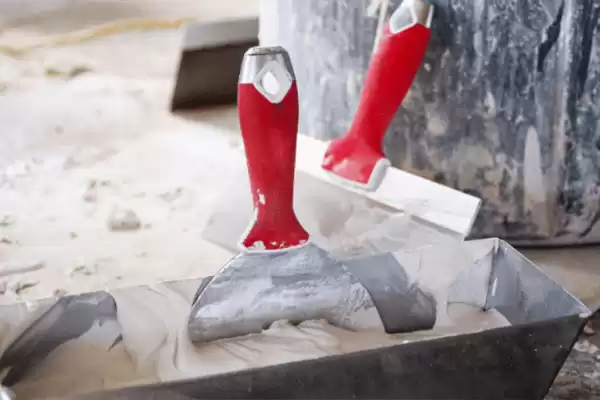The putty knife is a versatile tool found in every handyperson’s toolkit, whether for home improvement projects or professional use. From applying putty to smoothing joint compounds, the effectiveness of a putty knife can make a significant difference in the quality of your work. In this blog post, we’ll share some tips and tricks for using a putty knife to ensure a flawless finish on your next project.
Choosing the Right Putty Knife:
Blade Size: Putty knives come in various widths and lengths. Choose one that suits the area you’re working on for better control and coverage.
Blade Material: Stainless steel blades are durable and resist rust, while plastic blades are suitable for non-scratch applications.

Preparing the Surface:
Clean the Surface: Ensure the surface is clean and free of dust or debris to prevent the putty from adhering unevenly.
Prime if Necessary: Some surfaces may require priming to ensure proper adhesion of the putty or joint compound.
Applying the Putty or Compound:
Load the Knife: Scoop a sufficient amount of putty or compound onto the knife blade, spreading it evenly along the edge.
Apply with Even Pressure: Press the putty knife firmly against the surface and spread the material evenly. Use a consistent pressure to avoid thick or thin spots.
Smoothing Techniques:
Work in Small Sections: Tackle one small section at a time to maintain control over the application.
Use the Edge: Use the sharp edge of the putty knife to cut into the material, creating a clean line and preventing ridges.
Banking Technique: Lift the knife at a 30-45 degree angle to create a smooth, even surface without leaving marks.
Removing Excess Material:
Use a Dry Knife: A clean, dry putty knife can be used to scrape off excess putty or compound without damaging the surface.
Adjust the Angle: Experiment with different angles to find the one that best removes excess material without scratching the surface.
Cleaning the Putty Knife:
Clean Regularly: Wipe the blade clean after each use to prevent the putty or compound from drying on the knife.
Use Mineral Spirits: For stubborn residues, use mineral spirits or a similar solvent to clean the blade without causing damage.
Safety Considerations:
Handle with Care: Always handle the putty knife with care to avoid injury, especially when using sharp-edged models.
Protective Gear: Wear appropriate protective gear, such as gloves and safety glasses, when working with putty or other materials.
Advanced Techniques:
Feathering Edges: Use the putty knife to feather the edges of the putty into the surrounding surface for a seamless transition.
Texturing: Once the putty is applied, use the putty knife to create texture patterns that match the rest of the surface.
Conclusion:
A putty knife might be a simple tool, but it requires skill and technique to use effectively. By following these tips and tricks, you can ensure a smooth, professional finish on your projects. Whether you’re a DIY enthusiast or a seasoned professional, mastering the putty knife can elevate the quality of your work.
Post time: Jun-21-2024






